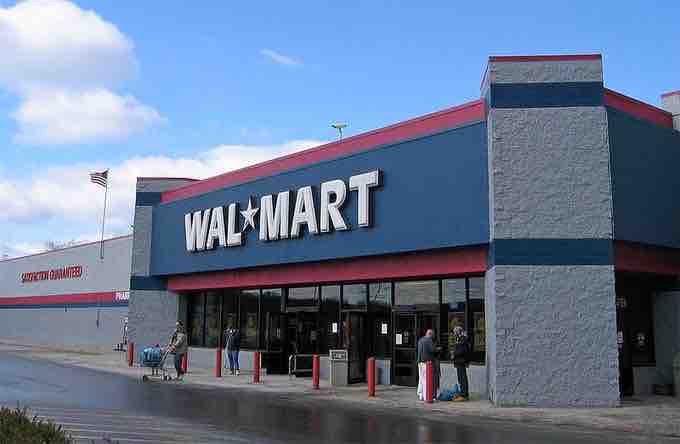Product lining is the marketing strategy of offering several related products for sale as individual units. A product line can comprise related products of various sizes, types, colors, qualities, or prices. Line depth refers to the number of subcategories a category has. Line consistency refers to how closely related the products that make up the line are. Line vulnerability refers to the percentage of sales or profits that are derived from only a few products in the line. The number of different categories of a company is referred to as width of product mix. The total number of products sold in all lines is referred to as length of product mix. If a line of products is sold with the same brand name, this is referred to as family branding.

Walmart Exterior
Large companies, such as Walmart, often have product lines that cover a wide variety of similar or related needs.
Variables to Consider When Selecting a Product Line Strategy
There are two basic strategies for dealing with whether the company will attempt to carry every conceivable product needed and wanted by the consumer or whether they will carry selected items. The first is a full-line strategy while the second is called a limited line strategy. Few full-line manufacturers attempt to provide items for every conceivable market niche. And few limited-line manufacturers would refuse to add an item if the demand were great enough. Each strategy has its advantages and disadvantages.
Line extensions strategies involve adding goods related to the initial product, whose purchase or use is keyed to the product. For example, a computer company may provide an extensive selection of software to be used with its primary hardware. This strategy not only increases sales volume, it also strengthens the manufacturer's name association with the owner of the basic equipment and offers dealers a broader line. These added items tend to be similar to existing brands with no innovations. They also have certain risks. Often the company may not have a high level of expertise with either producing or marketing these related products. Excessive costs, inferior products, and the loss of goodwill with distributors and customers are all possible deleterious outcomes.
There is also a strong possibility that such a product decision could create conflict within the channel of distribution. In the computer example just described, this company may have entered the software business over the strong objection of their long-term supplier of software. If their venture into the software business fails, re-establishing a positive relationship with this supplier could be quite difficult. A line extension strategy should only be considered when the producer is certain that the capability exists to efficiently manufacture a product that compares well with the base product. The producer should also be sure of profitable competition in this new market.
Line-filling strategies occur when a void in the existing product line has not been filled or a new void has developed due to the activities of competitors or the request of consumers. Before considering such a strategy, several key questions should be answered:
- Can the new product support itself?
- Will it cannibalize existing products?
- Will existing outlets be willing to stock it?
- Will competitors fill the gap if we don't?
- What will happen if we don't act?
Assuming a firm decides to fill out its product line further, there are several ways of implementing this decision.
Ways to Implement the Filling Out of a Product Line
- Product proliferation: The introduction of new varieties of the initial product or products that are similar.
- Brand extension: Strong brand preference allows the company to introduce the related product under the brand umbrella.
- Private branding: Producing and distributing a related product under the brand of a distributor or other producers.
In addition to the demand of consumers or pressures from competitors, there are other legitimate reasons to engage in these tactics. First, the additional products may have a greater appeal and serve a greater customer base than did the original product. Second, the additional product or brand can create excitement both for the manufacturer and distributor. Third, shelf space taken by the new product means it cannot be used by competitors. Finally, the danger of the original product becoming outmoded is hedged.
Yet, there is serious risk that must be considered as well. Unless there are markets for the proliferations that will expand the brand's share, the newer forms will cannibalize the original product and depress profits. Line-pruning strategies involve the process of getting rid of products that no longer contribute to company profits. A simple fact of marketing is that sooner or later a product will decline in demand and require pruning.